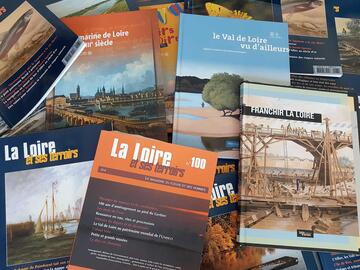
06/03/2025
[Fr] Décès de Philippe Auclerc
C'est avec tristesse que nous avons appris aujourd'hui le décès de Philippe Auclerc, co-fondateur de la maison d'édition "Loire et terroirs" et rédacteur...
Published on 14 January 2016 - Updated 26 January 2016
Cet article date d'il y a plus de 9 ans
Located in northern Laos, Luang Prabang is built on a peninsula formed by the Mekong and the Nam Khan River. Mountain ranges encircle the city in lush greenery. It is an outstanding example of the fusion of traditional architecture and Lao urban structures with those built by the European colonial authorities in the 19th and 20th centuries. At the end of 2015, a delegation from Chinon attended the festivities organised to mark the 20th anniversary of Luang Prabang's inclusion on the World Heritage List.
In 2000, UNESCO included the Loire Valley in the World Heritage of Humanity List, which reflects the wealth and diversity of the Earth’s cultural and natural heritage. Each month, Mission Val de Loire is presenting a different site to you which, as well as being a world heritage, is also part of our heritage.
From the 14th to the 16th century the town became the capital of the powerful kingdom of Lane Xang (Kingdom of a Million Elephants), whose wealth and influence were related to its strategic location on the Silk Route. The city was also the centre of Buddhism in the region.
After the establishment of the French Protectorate in 1893, following a period of turmoil during which the country was divided into three independent kingdoms, Luang Prabang once again became the royal and religious capital during the reign of King Sisavang Vong. It played this role until Vientiane became the administrative capital in 1946.
The political and religious centre of Luang Prabang is the peninsula, with its royal and noble residences and religious foundations. The traditional urban fabric of the old villages, each with its temple, was preserved by later constructions. The colonial urban morphology, including the network of streets, overlapped harmoniously with the previous model.
Photos: CC Jean-Marie Hullot @Flickr
Its unique, remarkably well-preserved townscape illustrates a key stage in the blending of these two distinct cultural traditions.
Many traditional Lao houses remain; they are built of wood using traditional techniques and materials introduced in the colonial period, such as plaited bamboo panels coated with wattle and daub. Brick colonial buildings, often with balconies and other decorative features in wood, line the main street and the Mékong.
Initiated in 1995 under the auspices of UNESCO, cooperation between Chinon and Luang Prabang arose out of the astonishing similarities between these two ancient royal capitals boasting exceptional architectural and cultural heritage.
For 20 years now, the programme has helped to increase local resources through a range of measures focused on training, strengthening Laotian expertise and providing the authorities with support for managing the site.